|
In this semester the main questions of the curse were: How to turn a musem visit into an appealing experience? How to exploit digital technologies for cultural heritage preservation?
.jpg)
Besides foundation and seeing best practices, students were working in interdisciplinary teams (enhanced by informatics students from BME - Budapest University of Technology and Economics) on dedicated projects, and at the final presentation, provided de mo or mock-up of the working of their projects for the representatives of the partner musa.
In this semester our museum partners were:
● The Hungarian Museum of Trade and Turism, Budapest
● Hungarian House of Photography in Mai Manó House
● Museum of Fine Arts, Budapest
●Vasarely Museum, Budapest
This practical combination of teams (museum experts and students from a different fields and interests)
produced many interesting projects this year too.
You can get a quick insight into these from this summary:
Applications for The Vasarely Musem, Budapest
My Moire
concept and design: Komlósi Dóra, Magyar Dorottya, Szivás Fanni, Varga Csilla
programming: Btlik Barnabás (BME)
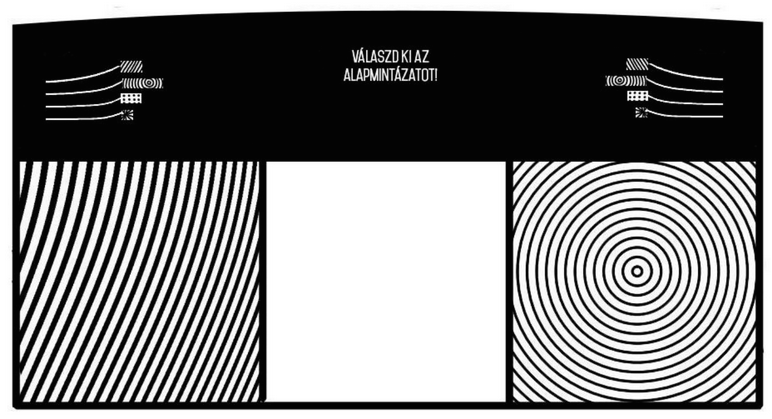
The goal of the designers was to create a tool that allows understanding the op-art techniques, within the moiré effect, involving the visitor learning-by-doing way to get more deeply into the inner dynamics of this process, by linking two visitors to create the layers of the Moiré, and then observe the result together . The application runs on a large touch-screen interface, because there is enough place for two players and they are able to play together. Every two user own one part of screen, and they have also a place together. Both players create their own pattern on the tablet, and after they finish their work, they overlay those works. At this point the two different patterns mix up in the mutual screen place
and appearing the moire effect. Users can change patterns by adjusting real-time parameters (density, line thickness, color) even easier to understand the operation of the effect.
The creators felt important to connect the concept to a painting on exhibit in the Vasarely Museum. Therefore, the game is designed to be used in the Museum to encourage visitors to go there and try out the game in front of the painting with a Moiré effect.
iVasarely
concept:Birtalan Szabolcs
programming: Botik Barnabás (BME)
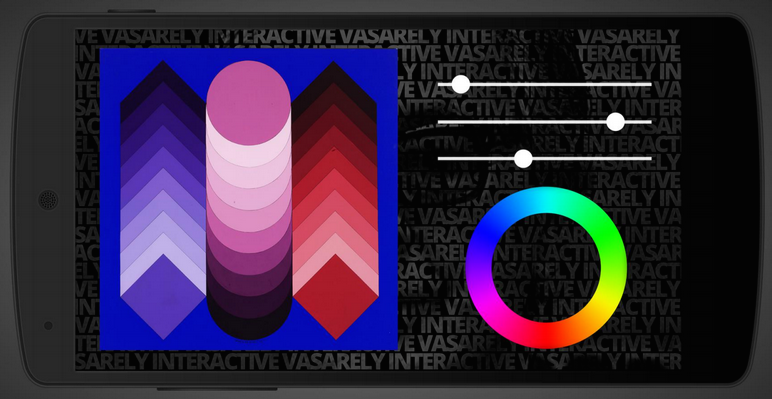
The iVasarely is a mobile application designed for the Vasarely Museum. It aims to encourage active participation, and get closer to the principles of Vasarely’s paintings, such as his color usage.With this application the visitors can assign own colour pallet to one of Vasarely’s paintings and see the effect. Therefore everyone gets an opportunity to reflect on the question- what is behind the artist's conscious choice to use specified colors.
Applications for the Museum of Fine Art, Budapest
The Musem is closed- Be the Curator, Building Inspection
concept: Varga Csilla
The Museum of Fine Arts is going to be closed and will not be open for nearly two years. The following two web applications were designed to be launched for the period of the construction in order to to keep visitors attention and interest maintained.
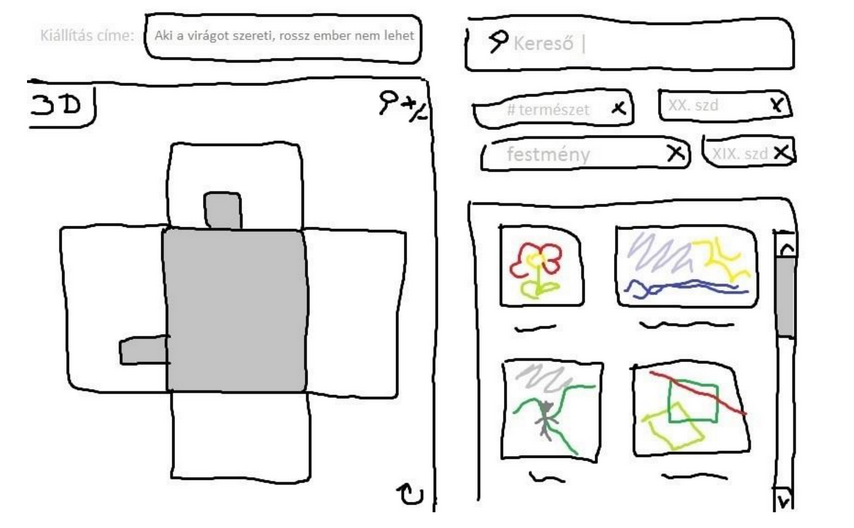 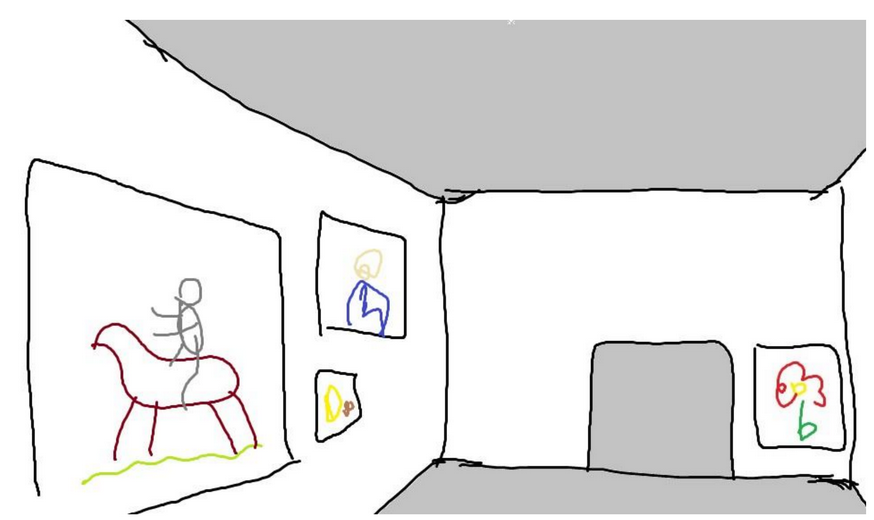
Be the Curator
On the Be the Curator! one is challenged to put together an exhibition in a (virtually available) exhibition room. Users can set up the exhibition by selecting items form the digital archive of the art pieces of the museum, according to their own concept. The web interface can help you test the feasibility by showing the spacial constraints. The program is also giving an opportunity to verify the "curator1s" concept, for example, by checking the special environmental requirements for the selected artworks endowments (for example humidity,painting conditions etc.). At the end of the curatorial process the program generates a 3D model, where users can take a look at their conceptual exhibition idea. Afterwards, the proposals may be discussed in a social media. According to the idea of the students, the most liked or otherwise selected proposal may be realised when the museum is open again.
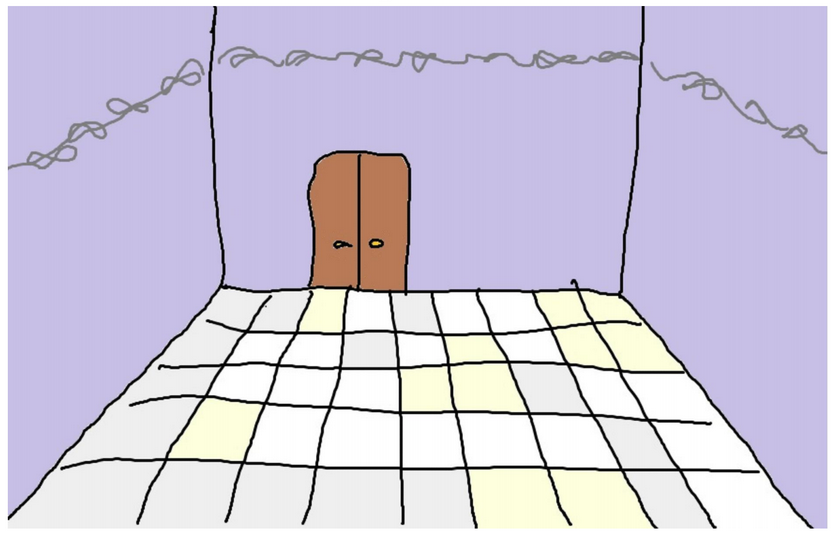
Building Inspection
The goal of this project is to give the audience the impression of “following” the construction work from day to day, even if they may not enter the venu for years. Instead of “Big brother”, the public is watching the progress. Over a webcam, visitors can get an insight into the changing spaces of the Museum of Fine Arts, and can get some information about the progress of the construction. In addition, the information panels attached to hotspots of the inspected space tell about a number of measures and facts of the building, and highlight the exciting features ('fun facts', hidden extras, special stories and unusual solutions). This way you can actually become the part of the challanges. The spectacors also can leave comments on the website to discuss every part of the rebuilding process.
FineArt App
concept: Pálhegyi Flóra
 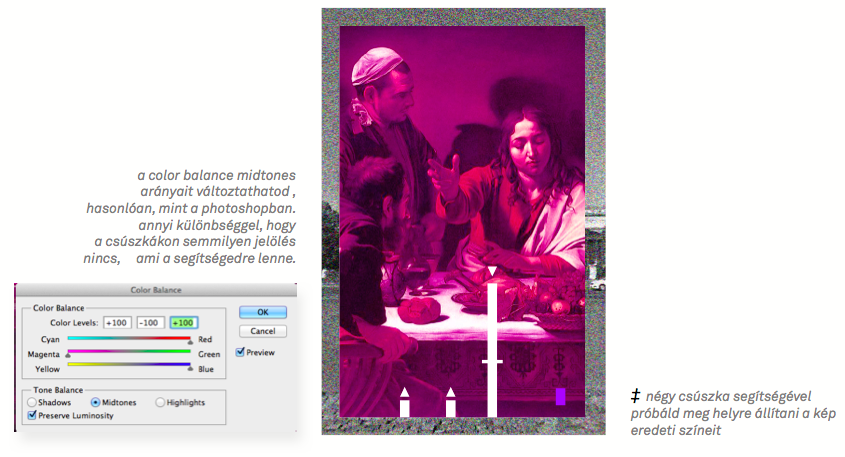
The mobile application seeks to preserve visitors interests of Museum of Fine Arts during the renovation when the Museum will be closed. The task is not easy, because the enjoyment of original art pieces can not be replaced with the observation of digital reproductions. In fact the idea of the application is based on the works visual impressions and memories.
The application contains two separate games.
In the first game users have only a few seconds to observe a painting, then they need to record a quick sketch on the mobile phone’s touch screen. When they finished their drawing it will be comparable with the original painting.
The second game plays with the light and shadow effects of original paintings. The users have just a few seconds to observe the original painting, and then they have to try and set back the recolored and relighted photo to the original. The task is hard with the slider because there is no mark on it.
Applications for The Hungarian Museum of Trade and Tourism
Marketplace in Pest in the age of 1935
concept:Losoncz Barbara, Eugenia Veshcheva
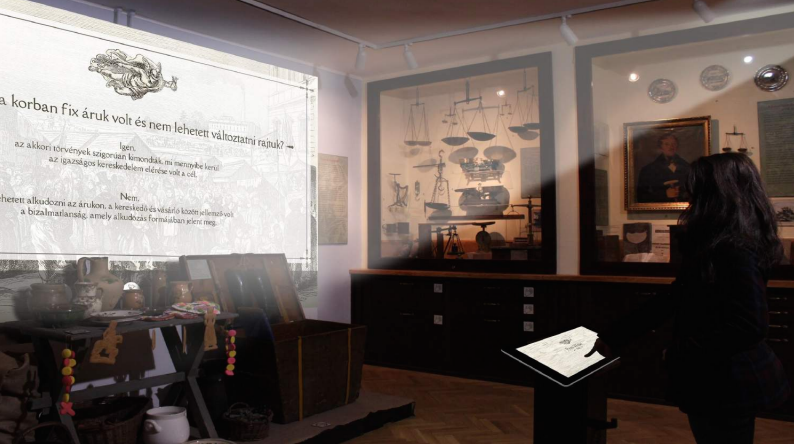 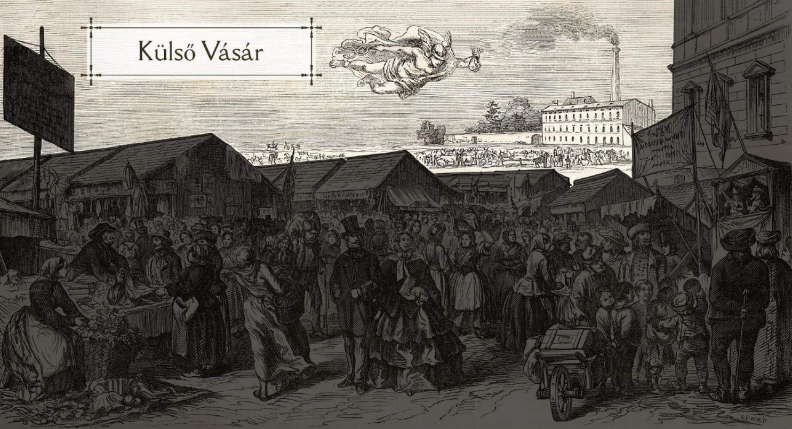
In the first exhibition room of the Hungarian Museum of Trade and Tourism the visitors are able to get acquainted with trade and market of the 19th century. There is a huge woodcut with large number of different scenes and figures. This picture is full of information and details therefore the visitor's attention can digress. The concept of this application is based on this problem.
The designers developed a game made of three modules which introduces the hidden secrets of the picture for the visitors. The application works with animated characters of woodcut and uses these in an interactive scenario.
It can be used and controlled on tablets, while a projection is showing the full size projected image on the original woodcut.
The application allows people to choose challenges according to their own interests, and they can search the contemporary world of hustle and bustle of the market. The application is encouraging active participation supported by many learning processes.
In the focus is the table
concept: Komlósi Dóra, Magyar Dorottya, Pálhegyi Flóra, Szilvás Fanni
programming: Fehér Csaba (BME)
 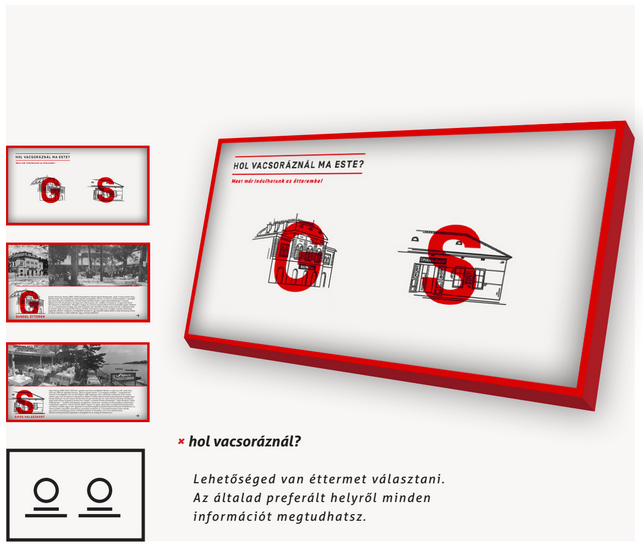
The creators settled a touchscreen into an old desk which gives a platform for an interactive game. In this way the visitors of The Hungarian Museum of Trade and Tourism can gain a lot of experience from the world of ancient times. Through interactive tasks and activity, the visitors can learn about the contemporary food habits, etiquette and hospitality practices too. With the help of interactive tasks that everyone can enjoy, whether you are aware of the official functions of a cutlery or know where he is with the exact location on the table. After the first section, when users managed to get to know the mysteries of restaurant etiquette, they can get a glimpse of two really famous old restaurants.
Interactive newspaper
concept: Eugeni Veshchev, Losoncz Barbara
The application and device was designed for The Hungarian Museum of Trade and Tourism. The touchscreen evokes the traditional format of newspaper and is able to display written and animated content also. The textual and visual content such are complementing each other in order to support deep understanding.
Applications for Hungarian House of Photography in Mai Manó House
Virtual tour in a temporary exhibition
concept: Adela Muntean, Komlósi Dóra

The web application is produced for a temporary exhibition in Mai Mano House called “Back to the studio!”. The exhibition displays nearly 60 thousand images during Mai’s 23 years of operation. This is a special exhibition because large amount of exhibited photographs came from private collections, and this was the only time when people could look at in a collection.
For this reason the creators made a website for the Museum where people could take a virtual tour in the whole museum and also the temporary exhibition after its finissage. Thanks to the high resolution images people were able to zoom into the pictures and they could really discover the small details, and could retrieve photos that interested them before.
As an extra feature, the virtual tour contained many information points, so not just the detailed view was memorable but also people could attach knowledge for the experience.
Mai App
conception: Vizy András
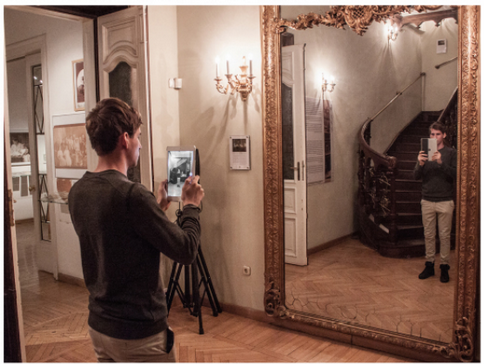 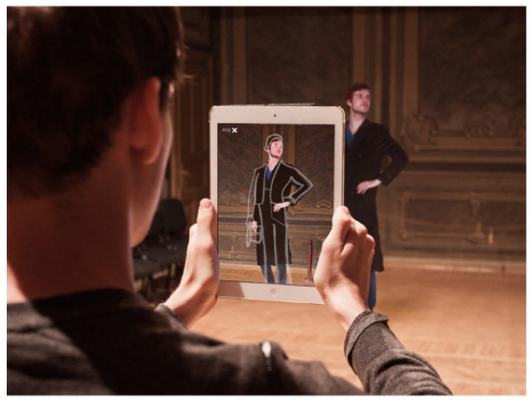 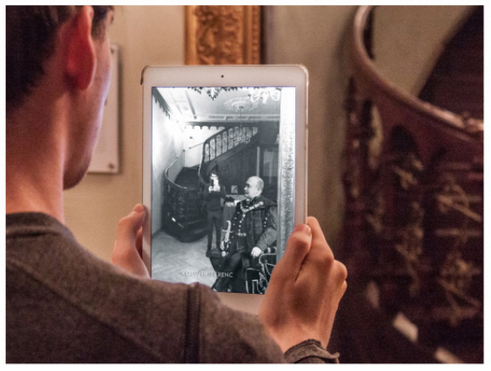
Mai Mano House is not only a matter of curiosity for photographs, but the building of the collection also holds numerous other values. This mobile application focuses on the photographer Mai Mano’s former house, its historical values, functions and the spirit of the age 19. century.
This mobile application works with QR codes located into different points of the Museum building. When visitors are scanning these they can get extra content about the House (such as descriptions, contemporary photos, illustrations) and also get interactive challenges (games, for example, which operates with the traditional way of photographing).
The application can only be used within the Museum building, therefore the experience is much more complex than a simple web browsing. The application expands the real space and gives specific informations, and in addition it offers active participation for the users. It can be used as a team game, an exciting adventure for groups also.
Analogy
concept: Lucas Breuer
programming: Gazdi László (BME)
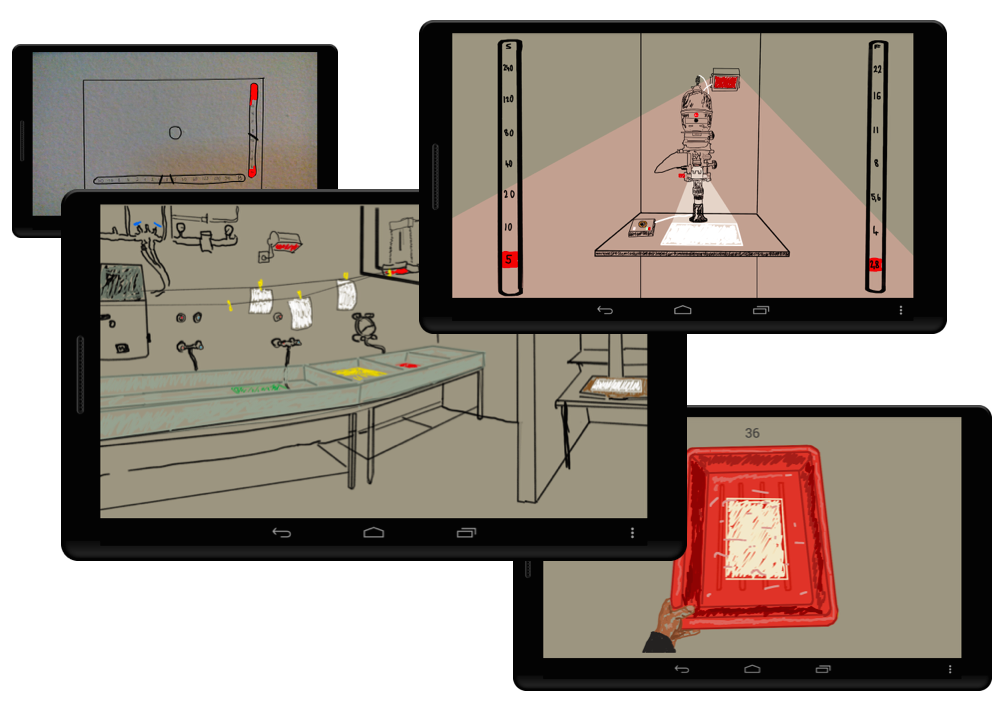
Mai Mano House owns and displays one of the most important historical photo-collection in Hungary. The Museum collects photographs from before the age of the digital world, the idea of this application came from this fact, focusing on the inner philosophy and special aesthetic of analog photo techniques.
The application which runs on mobile devices (mainly on tablets) simulates the whole process of analog photo development. The most interesting part of the “game” is that the users can try the process in real time. With this playful way everyone can learn by playing and also can feel the difference with today's digital world.
The course is supported by the International Visegrad Fund
.jpg)
International Visegrad Fund
|




.jpg)











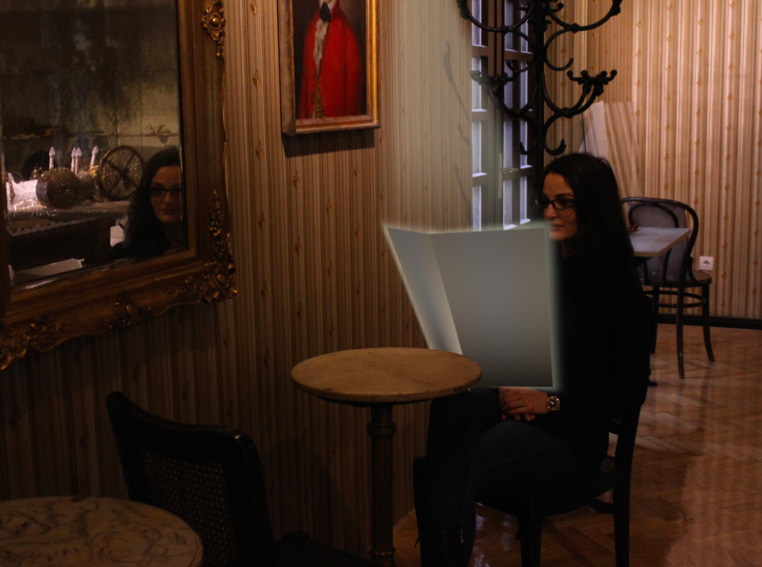
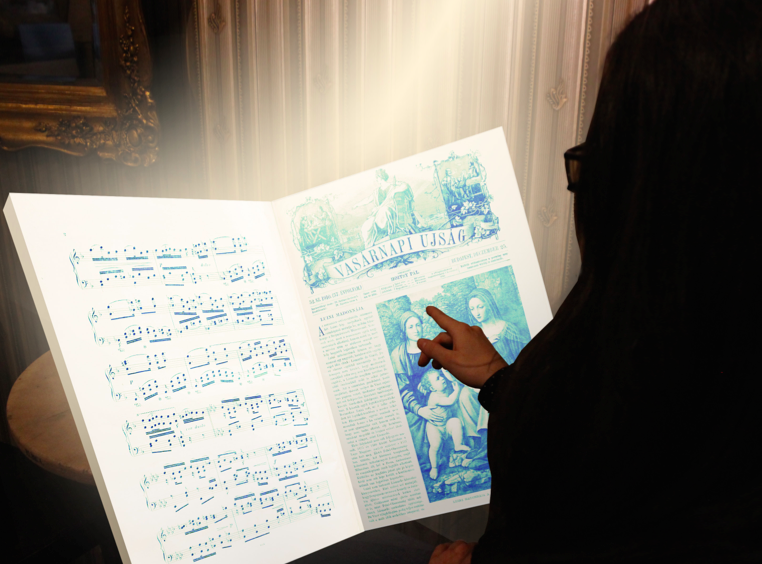
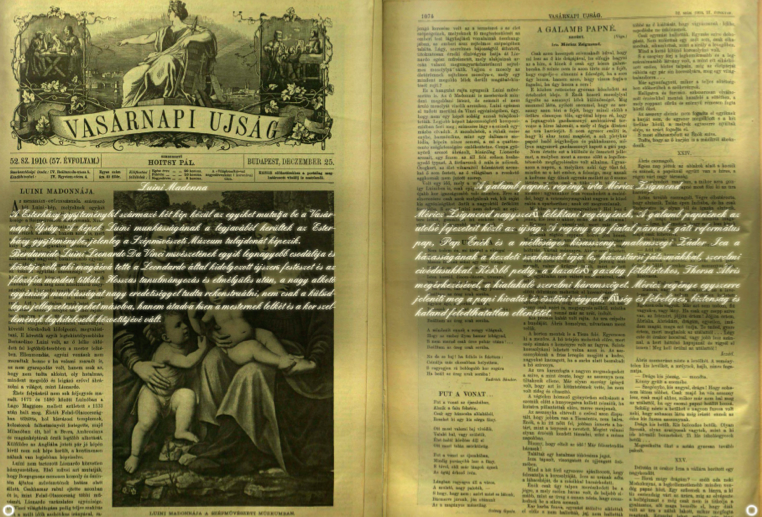





.jpg)